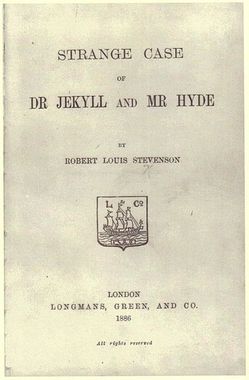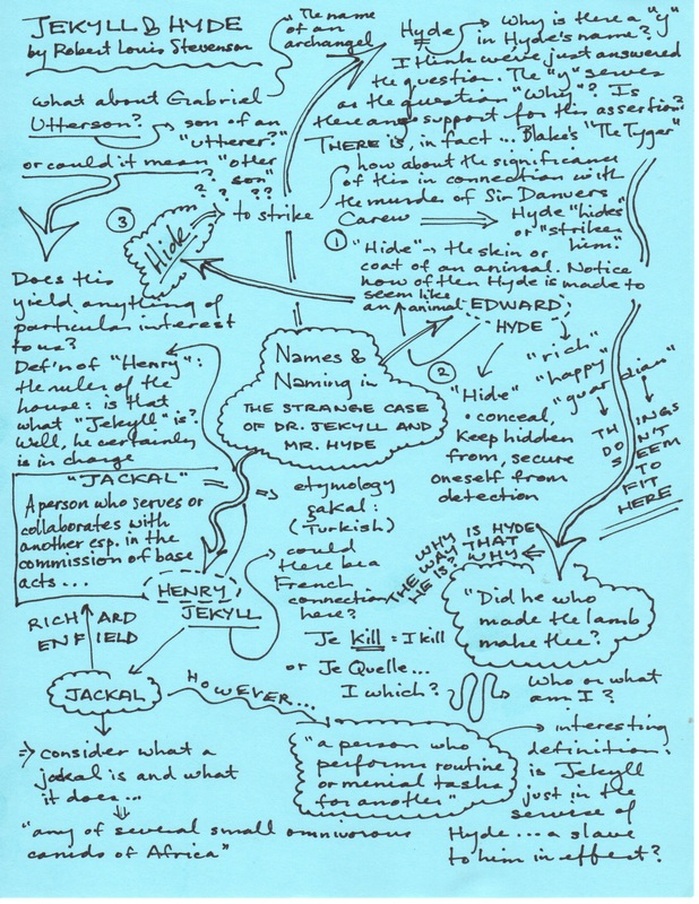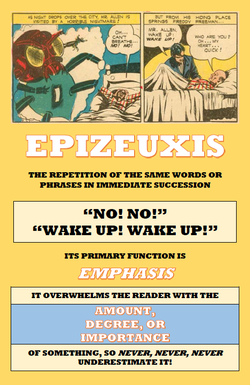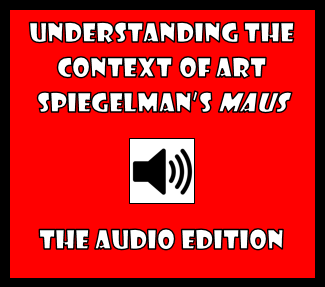|
by Glen Downey, Comics in Education, www.comicsineducation.com  We've taken a look so far at a number of examples of how visual narrative can be adapted to brainstorming and note-taking in order to allow us to take the non-linear ideas in our head and put them down in a way that makes sense to us. A neat application of this is when we are researching, note-taking, and brainstorming in the area of literary onomastics: the study of names and naming in literature. An activity like visual brainstorming, especially when accompanied by a good dictionary, can produce some pretty great results. Take, for instance, one of the most fascinating novellas of the 19th-century, Robert Louis Stevenson's The Strange Case of Dr. Jekyll and Mr. Hyde. (Your students might be amused by this animated version of Stevenson's story -- from Australia -- that came out exactly 100 years after the novel). Here's what a quick visual brainstorm can help us to see in the novel with respect to the significance of the names that Stevenson uses. It doesn't appear to be happenstance that he chose "Jekyll" and "Hyde" for his central characters...er...character. Give me a dictionary and the freedom to brainstorm in this manner and it quickly becomes apparent how relevant names and naming are to Stevenson's novel. Even if some of the associations seem like a stretch, it's the freedom to make these associations in this early phase of the researching and pre-writing process that will yield results for our students later on. The problem with a graphic organizer in this instance is that it suggests to the student that there is an expectation about what they must produce. With such an expectation in mind, they can find it challenging to think outside the box. After all, in a graphic organizer we've already put the box there...
0 Comments
Your comment will be posted after it is approved.
Leave a Reply. |
Glen DowneyDr. Glen Downey is an award-winning children's author, educator, and academic from Oakville, Ontario. He works as a children's writer for Rubicon Publishing, a reviewer for PW Comics World, an editor for the Sequart Organization, and serves as the Chair of English and Drama at The York School in Toronto. If you've found this site useful and would like to donate to Comics in Education, we'd really appreciate the support!
Archives
February 2019
|




 RSS Feed
RSS Feed
